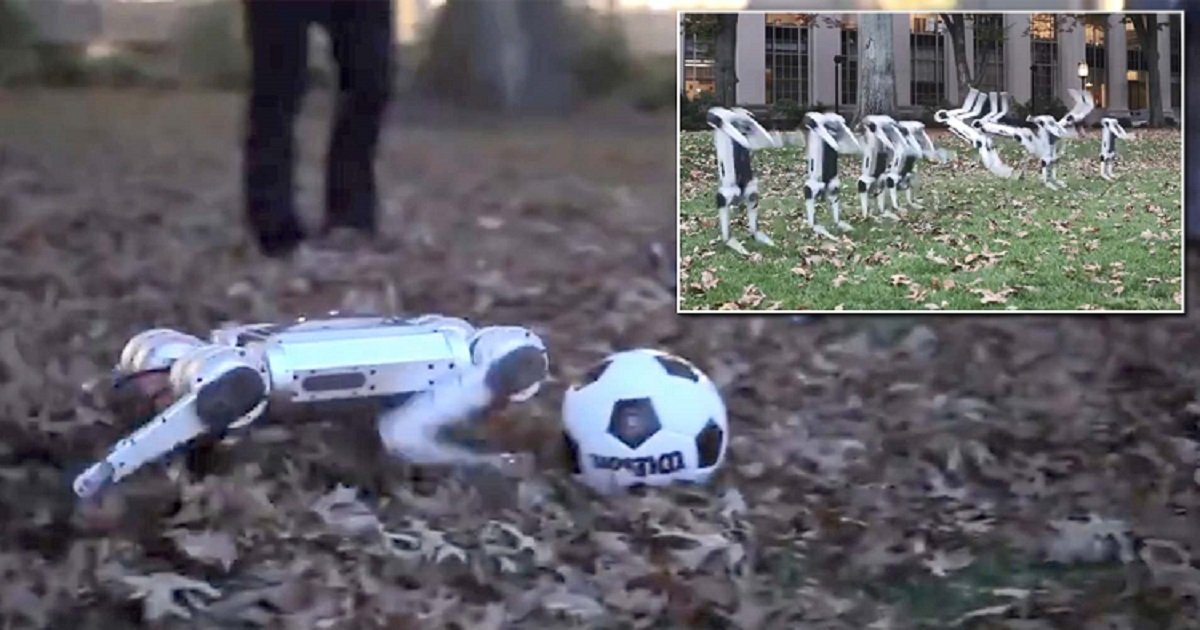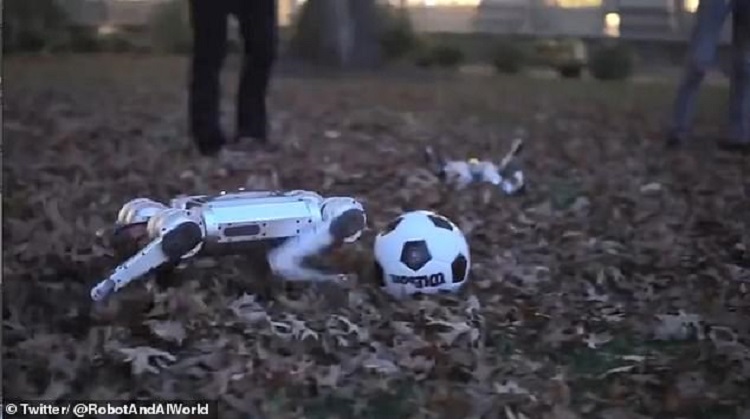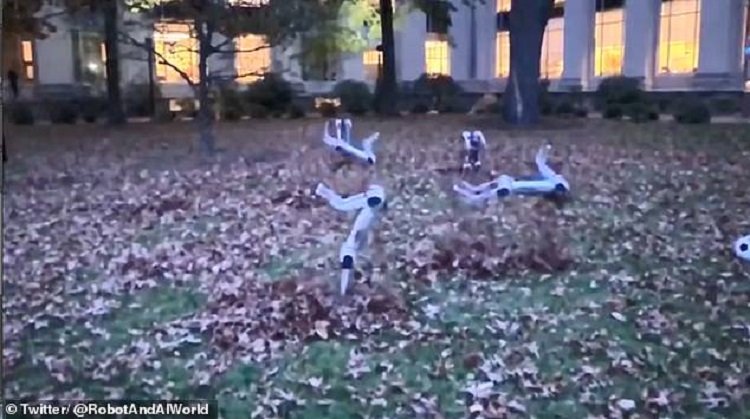In 1984, The Terminator came out and everyone’s fears about AI and killer robots found new expressions on the big screen.
Of course, back then people pretty much dismissed such a possibility as a fantasy born of an overactive imagination. Nowadays, not so much.
Watch the MIT’s cheetah robots playing soccer below.
[rumble video_id=v5v0eb domain_id=u7nb2]
Video credit: Rumble
This is because the pace at which the field of robotics has been advancing is both amazing and disturbing. Boston Dynamics certainly leads the pack with its stable of highly advanced bipedal and quadruped robots. That one clip of their biped robot doing parkour as it negotiated some obstacles was particularly disturbing (imagine running away from one and throwing furniture in its way only to realize that it can efficiently avoid all of them).
But the Massachusetts Institute of Technology (MIT) is not far behind with its Mini Cheetah robot. They already showcased the Mini Cheetah robots in March, showing that they can do backflips. Now, a more recent video shows the small androids dribbling a soccer ball as well as running and jumping.
Sangbae Kim, the Director of Biomimetic Robotics Lab at MIT, said back in March, “Eventually, I’m hoping we could have a robotic dog race through an obstacle course, where each team controls a mini cheetah with different algorithms, and we can see which strategy is more effective.”
Kim added, “That’s how you accelerate research.”
And judging by the improved performance of the Mini Cheetahs, that’s exactly what the MIT team did.
Because the four-legged robots are modular, it’s easy to replace any broken limbs or motors.
Benjamin Katz, the lead developer of the Cheetahs, also said back in March, “You could put these parts together, almost like Legos. A big part of why we built this robot is that it makes it so easy to experiment and just try crazy things, because the robot is super robust and doesn’t break easily, and if it does break, it’s easy and not very expensive to fix.”
This modularity makes them “virtually indestructible.”
With 12 separate motors powering a 20-pound chassis, they’re much smaller than the Cheetah 3 which ways 90 pounds. However, the Mini Cheetahs have the advantage of being “inexpensive and lightweight” while still able to perform the tasks that the Cheetah 3 is capable of like running, walking, jumping, and turning.
Despite these advantages, the Mini Cheetah probably won’t be available for sale, unlike Boston Dynamics’ quadruped robot Spot.
Replaced!




